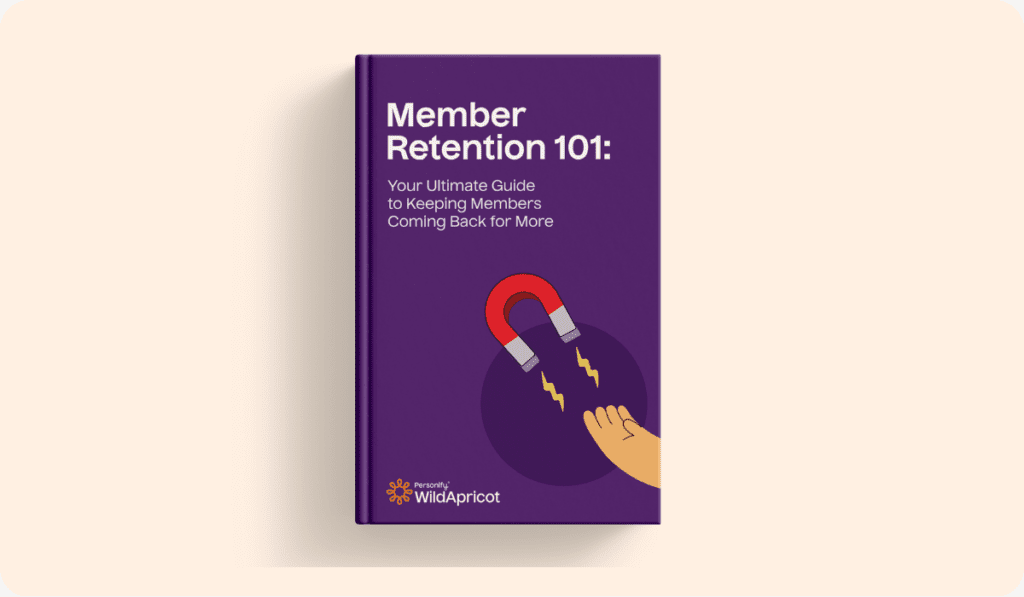Volunteers in every thriving nonprofit, association or club are heroes who power initiatives with time, skill, and passion.
According to AmeriCorps, the federal agency for national service and volunteerism, volunteer hours generated nearly $123 billion in economic value.
Yet, being grateful to them isn’t enough to motivate volunteers to give their full potential.
Volunteer surveys can help you solve this challenge.
A volunteer survey helps you to get insights into the best ways to engage, retain, and attract new volunteers.
In this guide, you’ll learn how to craft a survey that enables you to listen to and act on the volunteer feedback you receive. This solution will help you foster a deeper connection with your team and better achieve your organization’s goals.
What Are Volunteer Surveys?
A volunteer survey is a form or list of questions that helps you to gather your volunteers’ feedback, preferences, and suggestions. It lets you understand how your volunteers participate and make data-driven decisions to improve their experience.
You can use volunteer survey questions to measure several crucial areas, including:
- Fit as a volunteer: This measures how well a volunteer’s skills, interests, and expectations align with their current role. Understanding this fit can help ensure your volunteers feel valued and influential in their positions. The better the fit, the more their willingness to participate in your mission increases.
- Role placement: This aspect focuses on the appropriateness of where you place a volunteer within your organization. It assesses whether volunteers are in roles that entirely use their skills and meet their personal goals. The proper role placement to their satisfaction and long-term commitment.
- Satisfaction: This gauges a volunteer’s overall happiness and contentment with their experience. High satisfaction levels signify that a volunteer will continue supporting and advocating for your organization.
- Engagement: This evaluates a volunteer’s emotional and psychological investment in their role and your organization. It looks at the volunteer connection and motivation regarding your mission. Engagement can influence their performance and the likelihood of them taking on leadership roles.
- Impact: This measures how volunteers feel about the difference they are making through their work. Recognizing the impact of their contributions can boost a volunteer’s morale and encourage them to participate more.
Keep reading for examples of volunteer questions for different surveys that can help you build a more engaged and satisfied team.
Why You Should Run a Volunteer Survey
Understanding your volunteers’ perspectives can help you grow and sustain your organization. Running a volunteer feedback survey provides invaluable insights. You can use such insights to tailor your management strategies and meet your volunteers’ needs and expectations.
Here’s why investing the time in conducting these surveys pays off:
- Engagement opportunity: Surveys are a direct line of communication between you and your volunteers, making them feel heard and valued. This interaction promotes a sense of belonging and community. This approach can improve volunteers’ active involvement and enthusiasm about their roles.
- Feedback to improve volunteer experience: Gathering feedback from a volunteer satisfaction survey provides concrete data on what’s working well and what isn’t. You can act on this information to implement improvements that make your volunteers’ experiences more rewarding and fulfilling.
- Volunteer appreciation: Asking for feedback shows your volunteers that you value their opinions and contributions. Respecting their input can boost morale and reinforce their commitment to your mission.
- Retention: You are more likely to retain volunteers who feel engaged, valued, and satisfied. Volunteer surveys can help you identify factors that contribute to volunteer satisfaction and areas you can improve to reduce turnover.
How to Make an Engaging and Valuable Volunteer Survey in 8 Steps
Follow these eight strategic steps to craft a survey that captures your volunteer program’s essence and empowers your organization to make meaningful improvements.
1. Determine the Goal of Your Volunteer Survey
Set a clear goal for your survey to gather meaningful data. This step ensures that questions are purposeful and align with what you want to learn or achieve.
To implement this step, you can:
- Start by identifying areas you aim to explore, like volunteer satisfaction, training effectiveness, or event impact.
- Tailor your survey’s objective to guide your decisions on the types of questions to include. So, your insights will be focused and actionable.
2. Draft Focused and Relevant Questions
The quality of your survey data significantly depends on the questions you ask. Getting valuable information without the right questions matching your volunteer survey’s aim is more challenging. Focused and relevant questions increase your chances of getting more explicit, actionable insights.
When questions to ask volunteers about their experience, you can:
- Keep questions direct and easy to understand, and avoid jargon or ambiguity.
- Ensure each question directly contributes to your survey’s goal.
- Mixing question types (such as multiple-choice and open-ended) to gather quantitative and qualitative data.
3. Run Your Survey by the Board and Volunteer Coordinator
Your team’s feedback can help you refine the volunteer survey. This step can help you spot crucial aspects you may miss due to oversight and address all necessary areas.
It also ensures that the survey is sensitive to the volunteers’ experiences. So, the survey carefully considers and respects volunteers’ feelings, perspectives, and backgrounds.
To run your survey by your team:
- Present the draft survey to your board and volunteer coordinator for their insights. Focus on clarity, relevance, and completeness.
- Use their feedback to make adjustments. Ensuring the survey is comprehensive and aligns with organizational goals.
4. Mind the Timing
Sending your volunteer surveys at the wrong time can negatively impact the response rate and quality of feedback. Refrain from releasing the survey when your volunteers have many tasks to complete or feel burned out.
To send out your survey at the right time:
- Schedule your survey after significant events or at the end of a volunteering cycle. During this time, experiences are fresh, and volunteers may not be overwhelmed with tasks.
- Consider seasonal factors and avoid holiday seasons or end-of-year times when people are likely busier.
5. Create Incentives To Respond
Incentives can boost participation rates and make volunteers more likely to take the time to share their thoughts.
Here are some tips you can use for this step:
- Offer simple incentives, like a raffle entry for a small prize or recognition at the next meeting. You can use them to encourage volunteers to complete the survey.
- Ensure the incentives are appropriate and align with your organization’s values and budget.
6. Thank Everybody
Showing appreciation to your volunteers for participating in the survey is vital. This gratitude reinforces the value you place on volunteers’ feedback and time.
To thank everybody, you can:
- Send all participants a personalized thank-you message or email after the survey closes to express gratitude for their insights.
- Publicly acknowledge the importance of their feedback in meetings or newsletters to demonstrate a culture of appreciation and openness.
7. Analyze Your Volunteer Data
Your volunteer survey’s actual value is in analyzing the data you collect. You can use the analysis to identify trends, volunteer strengths, and growth opportunities.
When analyzing your volunteer data:
- Use tools or software to help organize and visualize the data so that you can interpret it easily.
- Look for patterns or recurring themes that could signify issues or opportunities within your volunteer program.
8. Implement What You’ve Learned
Act on the insights from your survey to improve overall performance. This step demonstrates to your volunteers that you heard and value their feedback.
Here are a few best practices to act on your volunteer survey’s insights:
- Develop a plan to address the feedback. Ensure you set clear objectives and timelines to implement the changes.
- Communicate your action plan with the volunteers to show the direct impact of their feedback on the organization’s strategies and policies.
Examples of Questions To Ask Volunteers About Their Experience
You can gain insights from your volunteers’ feedback when you ask targeted, thoughtful questions. These questions can help you gather meaningful data and promote a stronger, more engaged volunteer team.
Application / Recruitment
This survey helps you understand what attracts volunteers to your organization and how you can optimize your onboarding process. These insights are vital, from attracting motivated individuals, especially young volunteers, to creating new volunteer checklists.
Here are some questions to ask volunteers in this case:
- What motivated you to apply to volunteer with us?
- How did you hear about our volunteer opportunities?
- What days and times are you generally available to volunteer?
- What are your main goals or expectations in volunteering with us?
- How do you prefer to be contacted for future volunteer opportunities?
- Do you have any concerns or hesitations about volunteering with us?
- Are there specific skills or experiences you hope to gain or contribute?
Training
Training volunteer surveys aim to evaluate your volunteer training programs’ effectiveness. These sessions provide feedback that can guide how you improve your programs so volunteers feel prepared and confident in their roles.
You can ask the following questions:
- Did the training fully prepare you for your volunteer role?
- How can we improve our training materials and sessions?
- Did you feel comfortable asking questions during the training?
- Was the training duration appropriate for the content covered?
- What additional topics or skills would you like included in future training?
- How would you rate the overall effectiveness of the training you received?
- Was there any part of the training you found particularly helpful or unhelpful?
Post-Event
Post-event surveys help you get immediate feedback from volunteers about specific events or projects. You can use this information to acknowledge their efforts, address issues, and celebrate successes.
Some questions for this type include:
- How well did we organize the event?
- Would you volunteer for a similar event in the future?
- Is there anything else you’d like to share about your experience?
- What was the highlight of your volunteer experience at this event?
- How would you rate your overall experience as a volunteer at the event?
- Were there enough resources and support available to you during the event?
- Were there any challenges you faced during the event? If so, how can we address them in the future?
Annual
Annual volunteer questionnaires comprehensively overview a volunteer’s experiences over the year. These surveys provide insights into long-term satisfaction and engagement to help you shape future strategies.
The questions here include:
- Have your contributions been recognized and valued?
- Have you had opportunities to grow and develop new skills?
- What has been the most rewarding aspect of your volunteer work?
- How likely are you to continue volunteering with us in the coming year?
- How satisfied are you with your volunteer experience over the past year?
- Can you provide any suggestions for new volunteer opportunities or projects?
- What changes or improvements would you like to see in the volunteer program?
Volunteer Data Update
Volunteer data update surveys ensure your records are current by capturing any changes in volunteers’ contact information, availability, or interests. Keeping this data up-to-date helps you assign roles and communicate with your volunteers effectively.
Here are examples of questions you can use for this type of survey:
- Do you have any new skills or certifications we should know?
- Would you be interested in taking on leadership or mentorship roles?
- Has your availability changed since you last updated us (days, times)?
- What areas of our work are you most interested in contributing to in the future?
- Is there any other information you’d like to update us on or additional feedback you’d like to share?
- Have there been any changes to your contact information (email, phone number, etc.)?
- Are you interested in exploring different volunteer roles or responsibilities within our organization?
9 Volunteer Questionnaire Tips
Follow these top tips to create a questionnaire that volunteers will want to fill out and that will yield the insights your program needs to improve:
- Keep it brief: Aim for a survey that volunteers can complete in 5-10 minutes. Clearly state how long it takes to complete at the beginning to set expectations and increase completion rates.
- Make it user-friendly: Ensure volunteers can access your survey on various devices, including smartphones and desktops. A simple, clean design with easy-to-read fonts and colors will improve the survey’s user-friendliness.
- Consider your format: Use multiple-choice questions for straightforward responses, yes/no for clear decisions, and sliding scales for measuring the intensity of feelings or opinions. A suitable format can simplify the process for your volunteers and enhance the quality of your data.
- Stay on topic: Each question should serve a purpose towards meeting your survey goals. Irrelevant questions can distract or frustrate volunteers and lead to lower completion rates.
- Offer an anonymous option: Some volunteers may be more comfortable providing honest feedback if they know you can’t trace their responses back to them. Anonymity can lead to more candid and valuable insights.
- Include general volunteer data: This demographic information (like age and how long they’ve been volunteering) can help you identify trends. Then, you can tailor your volunteer program to suit your volunteers’ needs better.
- Avoid leading questions: Questions that suggest a particular response can skew your results. Neutrally frame your questions to gather unbiased data.
- Don’t be too open: While some open-ended questions can provide rich qualitative data, too many can make the survey feel like a chore. Use them only when necessary.
- Leave space for comments: Provide an open comment section at the end for additional thoughts or suggestions. This section can provide insights that your questions might not cover.
Using Membership Management Software To Track Volunteer Data
Membership management software helps you to streamline the process of using volunteer surveys to get invaluable feedback.
WildApricot is a standout solution with features that simplify the tracking and management of volunteer data. These features include:
- Customizable, up-to-date, searchable online directories to promote member connectivity and information accessibility.
- Automated email communications for memberships, events, and donations to save time and ensure personalized volunteer engagement.
- Intuitive forms designed for easy volunteer information gathering, sign-ups, and event registrations, so your data is synchronized.
Start crafting your impactful volunteer surveys today by signing up for a free 60-day trial with WildApricot, and take the first step towards a more engaged and satisfied volunteer community.










